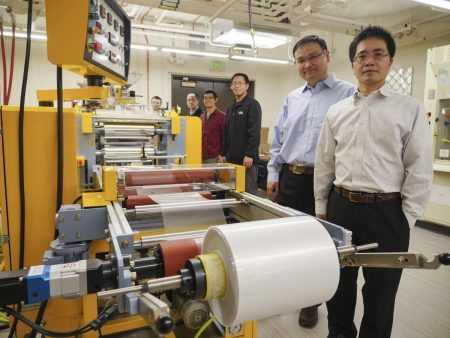March 30, 2017 – Passive radiative cooling is a phenomenon that occurs when sunlight strikes the icy surface of an ocean or a blanket of snow. Instead of the energy being converted to heat it radiates back into space in the infrared spectrum. The opposite passive heating occurs when sunlight strikes a room window and with the heat generated getting trapped inside a home or office building. In summer when dealing with passive heating we have two choices: close the blinds or curtains and live in the dark, or crank up the air conditioning.
But what if researchers were to find a material that allows photonic energy from the Sun through while reflecting the heat away. A material with these properties would make us less dependent on air conditioning, reducing energy demand during the summer.That’s exactly what two University of Colorado, Boulder, researchers have discovered. It is a glass-polymer film that looks like plastic wrap. It is just 50 micrometers thick, a little thicker than aluminum foil, and it can be manufactured on large scale, rolled up and delivered to residential and commercial building sites where it can be used as a roof coating.
Well, it seems that two University of Colorado, Boulder, researchers have discovered such a material. It is a glass-polymer film that looks like plastic wrap. It is just 50 micrometers thick, a little thicker than aluminum foil, and it can be manufactured on large scale, rolled up and delivered to residential and commercial building sites where it can be used as a roof, window or wall coating to reflect heat from solar radiation. It can also be applied to photovoltaic panels to improve their efficiency while reducing the risk of overheating.
The researchers have the last names, Yin and Yang, which would lead to whole other conversation. Nevertheless, Xiaobo Yin, Co-Director and Assistant Professor of Mechanical Engineering and Material Sciences, and Ronggui Yang, Professor of Mechanical Engineering, and a Fellow of the American Society of Mechanical Engineers were seeking to develop an eco-friendly technology for cooling. What they invented was a metamaterial film containing resonant polar dielectric microspheres within a glass polymer backed by a silver coating. The film showed radiative cooling of 93 watts per square meter.
States Xiaobo Yin, “applying this material to the surface of a solar panel, we can cool the panel and recover an additional one to two percent of solar efficiency,” which can extend photovoltaic efficiency beyond the current theoretical limit of close to 30%.
States Gang Tan, an Associate Professor in the Department of Civil and Architectural Engineering at University of Wyoming, “just 10 to 20 square meters of this material on the rooftop could nicely cool down a single-family house in summer.”
But the film has an even more interesting application. States Gang Tan, an Associate Professor in the Department of Civil and Architectural Engineering at University of Wyoming, “Just 10 to 20 square meters of this material on the rooftop could nicely cool down a single-family house in summer.” That means continuous cooling around the clock with no needed electricity or water. In other words, no running the air conditioner. That means no pumping out of warm air from inside the house to the outside contributing to the heat island effect common to most urban areas.
The inventors have calculated that a roof with their film coating could keep a home’s internal temperature at 20 Celsius (68 Fahrenheit) degrees when outside temperatures hit 37 Celsius (98.6 Fahrenheit). They have applied for a patent and plan to manufacture the film in rolls (the image below shows a small scale version of the manufacturing process). If mass produced and deployed en masse, this invention will yield enormous energy savings.
The result of their work was recently published in the March 10, 2017, issue of the journal Science.










